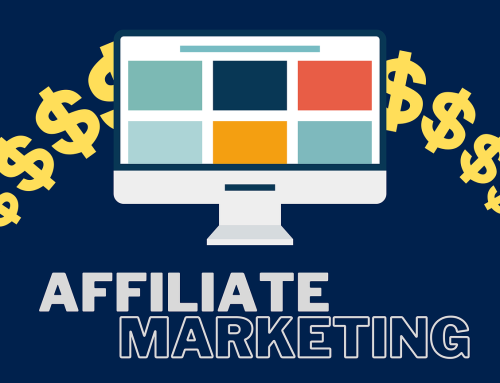 Email marketing is often misunderstood.
Email marketing is often misunderstood.
Email marketing professionals often battle misconceptions, misunderstandings and misanthropy in explaining what we do and why we do it. From defending our email campaigns, to the CFO who thinks we “send free letters,” to convincing our moms that we aren’t those evil spammers, it seems the email marketer is often maligned from every side.
Most people see us as one of these stereotypes:
- Evil spammers filling inboxes with unwanted junk
- Boring ‘newsletter’ writers filling inboxes with unwanted junk
- Brilliant marketers creating value and ROI at the heart of digital marketing (Well, maybe not too many on this one…)
Unfortunately, some of these misconceptions come from our own behaviors. Some are obvious, some are simple mistakes and some are old practices that need to change. For the last few months I have been working with some of the best email-marketing professionals on adding better data intelligence to email marketing to change the behaviors that create these misconceptions. From misunderstandings to mistaken assumptions, these same points bubble up consistently regardless of industry.
I developed a fresh appreciation for the challenges of building and executing an effective email-marketing program. The trial of never ending daily and weekly deadlines, outdated and inflexible tools and inconsistent executive buy-in make email marketing an all too often thankless job. It pays the most bills in the integrated marketing house, but it seldom gets the respect, let alone the budget it deserves, considering its compelling ROI of over $40 per dollar spent.
With that in mind, here are the 5 things that I wish everyone knew about email marketing.
1. Email Marketing is not spam.
Email marketing is sending marketing messages to your customers and prospects that they have requested and want to receive. It is a positive communication between the brand and the customer that benefits both parties. At it’s best it is relevant, timely and contextual. At it’s worst it can easily become spam.
Electronic spamming is the use of electronic messaging systems to send unsolicited bulk messages (spam), especially advertising, indiscriminately. While the most widely recognized form of spam is e-mail spam, the term is applied to similar abuses in other media: Web search engine spam, spam in blogs, online classified ads spam, Internet forum spam, and social spam.
 Sending relevant, permission based messages to your email subscribers is the opposite of spam. It is solicited, discriminate, targeted and on a reasonable frequency. Whether an email message is perceived as spam or not is largely up to the marketer. If you only send relevant and requested messages to your subscribers, the overwhelming majority of them will not consider it spam.
Sending relevant, permission based messages to your email subscribers is the opposite of spam. It is solicited, discriminate, targeted and on a reasonable frequency. Whether an email message is perceived as spam or not is largely up to the marketer. If you only send relevant and requested messages to your subscribers, the overwhelming majority of them will not consider it spam.
Which brings me to the second point
2. Email marketing must be permission-based.
If you are sending bulk email messages to people who did not specifically subscribe to your email-marketing list then you do not have their permission to email them.
That is spam.
Even if some of them by chance find value in what you sent them, it is still technically spam. (unsolicited bulk messages) Seth Godin is the most famous pioneer of permission-based marketing. Aside from the legal and financial penalties you can pay from violating CAN-SPAM and other acts the results you will achieve with a fully permission based marketing program are worth it.
And B2B marketers this means you too. Just because you scraped my email address from LinkedIn or Twitter does not mean you get to bombard me with spam messages.
3. Email marketing is not free.
Email marketing can be extremely low-cost, but it is not free. Writing, designing, coding, creating and actually delivering emails costs far more than it seems at first glance. But even if it was nearly free to send emails, the costs to your brand can be substantial when done wrong.
You get what you pay for. Those really awesome examples of great email marketing that present you with just the right offer on a new bike helmet right when you wanted to start biking again were no accident. It was the result of a well-executed email program. They spent a great deal of time and money getting that moment to happen seamlessly.
4. Content is king.
Everywhere you look you see the phrase “content is king”. Content marketing is helping to reenergize the email old guard and guiding new insight and direction. Once you have a strong email program setup with the right metrics and tools all that is left is the hardest part of all.
Content.
To succeed you have to say something meaningful to your subscribers. And in today’s market you have to cut through a tremendous amount of filters and noise just to get on your customers radar. If you stop delivering value for even a short time you will quickly lose your subscribers. Once you build your email foundation of permission based subscribers focus your effort, time and money on figuring out whom you want to target and what they want. Solve their pain points with timely and relevant content and you will win.
Speaking of winning…
5. Email marketing has a fantastic ROI but it is not automatic
It is a constant dance to bring all the pieces together in precisely the right way. It is remarkably hard work to build, create, write, edit, track and measure any email campaign. To make a truly successful email program that delivers compelling ROI and makes you look like a hero to your CFO is far more difficult.
Done right smartly targeted, well crafted and diligently measured email is the heart and soul of every integrated marketing program. Execute well and you can kick back in your virtual hammock and wait for the cavalcade of cash register ring tones from your payment processor.
Until it’s time to start the whole dance over again for the next email campaign, that is.
Learn more about our Email Marketing and SMS services.
Article by Andy Newbom





